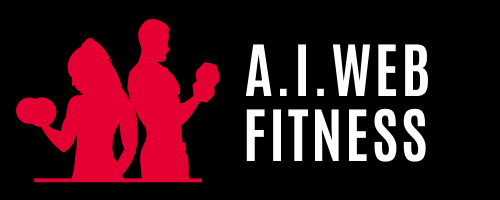10 Empowering Steps To Define Your Business as a Fitness Trainer
Index
Intro
How do you define your business?
Step 1: Self-Reflection and Goal Setting
Step 2: Identify Your Niche
Step 3: Define Your Unique Selling Proposition
Step 4: Research Your Target Audience
Step 5: Develop Your Brand Identity
Step 6: Create Your Services and Programs
Step 7: Set Your Pricing Structure
Step 8: Build Your Online Presence
Step 9: Develop Marketing Strategies
Step 10: Deliver Outstanding Service
FAQ
Conclusion
Defining Your Business As A Fitness Trainer

As a passionate fitness enthusiast, you’ve decided to turn your love for exercise and healthy living into a career as a fitness trainer.
Congratulations on taking this exciting step!
Now, one of the most crucial aspects of embarking on this journey is defining your business as a fitness trainer.
In a world saturated with fitness professionals, it’s imperative to establish a unique identity and set yourself apart.
In this article, I’ll guide you through the process of defining your fitness training business, step by step.
How do you define your business as a fitness trainer?
Step 1: Self-Reflection and Goal Setting

Before you jump into the business side of things, pause and Reflect On Yourself.
Consider what really matters to you as a fitness trainer.
What are the things you strongly believe in?
Also, think about what you really want to do with your business.
Do you want to help people shed pounds, build strength, boost their overall well-being, or something different?
Jot down your dreams and goals. Set Your Goals.
This will help you create a clear picture of what you want your business to become.
Remember, before you get all caught up in running your fitness business, take a moment to think about yourself.
What values do you hold dear as a fitness trainer?
What is it that you hope to accomplish through your business?
Do you have a strong desire to assist people in losing weight, gaining muscle, enhancing their general health, or pursuing some other objective?
It’s a good idea to write down your aims and ambitions.
Doing so will provide your business with a well-defined direction to follow.
**Checklist:**
[ ] Identify your core values and mission as a fitness trainer.
[ ] Define your short-term and long-term goals for your business.
Step 2: Identify Your Niche

In the world of fitness, it’s really important to have a specific focus.
This helps you concentrate on a particular group of people and become really good at helping them.
Your focus could be anything – like working with older folks, new moms, sports enthusiasts, or people with particular health issues.
Having A Niche In Fitness means picking something you’re great at and sticking with it.
This lets you help a particular group of people better than anyone else.
Your chosen area could be anything:
- guiding older adults in their exercises
- supporting new mothers in their fitness journey
- assisting athletes in their training
- aiding individuals with specific health challenges
**Checklist:**
[ ] Research different fitness niches to find one that resonates with your passion and expertise.
[ ] Identify the needs and challenges of your chosen niche.
Step 3: Define Your Unique Selling Proposition (USP)

What sets your fitness training business apart?
It’s all about your special reason for clients to choose you.
This reason, often called your Unique Selling Proposition (USP), is what grabs people’s attention.
Maybe you have a different way of training, a unique program, or a knack for connecting with clients on a friendly level.
The important thing is that your USP should fix a problem that your specific group of clients deals with.
Imagine your fitness training business as a standout in the crowd.
Why?
Because of what makes you different, the thing that makes clients want to pick you over others.
This special thing is known as your unique selling proposition (USP), and it’s like a magnet for customers.
Perhaps you have a one-of-a-kind training style, a program tailored in a unique way, or a talent for making a personal bond with clients.
The magic of your USP lies in its ability to solve a problem that your particular set of clients are struggling with.
**Checklist:**
[ ] Identify your unique strengths and what sets you apart from other fitness trainers.
[ ] Craft a clear and compelling USP that resonates with your target audience.
Step 2: Identify Your Niche

In the world of fitness, it’s really important to have a specific focus.
This helps you concentrate on a particular group of people and become really good at helping them.
Your focus could be anything – like working with older folks, new moms, sports enthusiasts, or people with particular health issues.
Having A Niche In Fitness means picking something you’re great at and sticking with it.
This lets you help a particular group of people better than anyone else.
Your chosen area could be anything:
- guiding older adults in their exercises
- supporting new mothers in their fitness journey
- assisting athletes in their training
- aiding individuals with specific health challenges
**Checklist:**
[ ] Research different fitness niches to find one that resonates with your passion and expertise.
[ ] Identify the needs and challenges of your chosen niche.
Step 4: Research Your Target Audience

Creating successful marketing strategies and customizing your services to fit your intended audience is incredibly important.
To do this well, it’s essential to dig into Who Exactly Your Audience Is.
This involves doing careful research to learn about their basic information:
- like age and location
- what they like and dislike
- the problems they often face
- what they want to achieve in terms of health and fitness
Imagine you’re planning a big party – you’d want to know who’s coming so you can have the right music, food, and activities that everyone will enjoy.
Similarly, in the world of business, understanding your audience helps you give them exactly what they’re looking for.
If you know most of your customers are busy young adults who want quick and effective workouts, you can design workout plans that fit their schedules and preferences.
Or if you find out that many people struggle with staying motivated, you can create services that include personalized coaching to keep them on track.
The better you know your audience, the better you can make your marketing and services work for them.
**Checklist:**
[ ] Define the demographics (age, gender, location, etc.) of your target audience.
[ ] Research their fitness preferences, challenges, and motivations.
Step 5: Develop Your Brand Identity

Your Brand Identity is like a special recipe that goes beyond just a logo and colors.
It’s like showing your business’s personality, what it cares about, and the feelings it wants to share with customers.
Imagine your brand as a friend – being the same kind and fun friend everywhere makes people remember you better.
When you use the same style of branding on everything – your website, social media, and even your packaging – it’s like telling a story that sticks in people’s minds.
They start recognizing you easily and your brand becomes a memory that stays with them.
So, remember, your brand is like a friendly face that shows up everywhere, and that’s what makes it unforgettable.
**Checklist:**
[ ] Choose a business name that reflects your values and niche.
[ ] Design a logo and choose a color palette that resonates with your brand’s personality.
[ ] Craft a mission statement that succinctly conveys your business’s purpose.
Step 6: Create Your Services and Programs

Think about your focus and who you want to help.
Design A Variety Of Fitness Options that match what they want and need.
Whether it’s personal coaching, exercising in a group, getting guidance online, or taking part in special classes.
Make sure these choices match what makes you unique and what your audience really wants.
Remember, your goal is to make your fitness services exciting for your chosen group.
Create programs that fit them well and help them reach their goals.
Whether you’re working with individuals or groups, in person or online, make sure your offerings stand out.
They should be what your audience is looking for.
**Checklist:**
[ ] Outline the various fitness services and programs you will offer.
[ ] Develop detailed descriptions for each service, highlighting the benefits and outcomes.
Step 7: Set Your Pricing Structure

Setting The Right Price for your services is like finding the sweet spot between what you’re really good at, how much your help is worth, and what others are charging.
Imagine you’re a fitness coach – you need to consider both your skills and the value you bring to your clients.
At the same time, it’s important to look around and see what other fitness trainers are charging in your area.
This helps you figure out a price that’s fair and matches what you bring to the table, while also being in line with what people generally expect to pay.
Picture this: you’re crafting a puzzle with three essential pieces – your expertise, the importance of your guidance, and what the fitness coaching market is charging.
These pieces need to fit together just right to show how much you should charge.
Imagine you’re baking a cake and each ingredient matters – your knowledge and what you offer are like the main flavors.
By blending these ingredients thoughtfully, you’ll come up with a price that’s both competitive and truly represents the unique value you provide as a fitness trainer.
**Checklist:**
[ ] Research pricing in your niche and location.
[ ] Set clear pricing tiers for your services and programs.
Step 8: Build Your Online Presence

In our modern digital era, it’s really important to make yourself known online.
This means having a good website and social media accounts that show who you are and what you do.
Share things like your brand, the work you’ve done that went well, and what you’re really good at.
Don’t forget to keep adding useful stuff to your pages to keep people interested.
Remember, in today’s world, being active online is a must.
You Should Have A Professional Website and social media profiles that tell people about your brand and what you do.
Share stories of how you’ve done things successfully and show what you’re an expert in.
Keep your online places up to date with helpful things, so the people who follow you stay interested and engaged.
**Checklist:**
[ ] Register a domain name and build a user-friendly website.
[ ] Create social media profiles on platforms relevant to your target audience.
[ ] Develop a content plan for blog posts, videos, and social media updates.
Step 9: Develop Marketing Strategies

Attracting clients to your fitness training business is really important, and Marketing Is The Key to making it happen.
You need to use different ways both online and offline to get the attention of the people you want to help get fit.
It is to define your business as a fitness trainer.
This means using things like ads on social media, creating helpful content, sending emails to keep in touch.
Get to know people in your local area.
Online, you can put up ads on platforms like Facebook or Instagram, showing how you can help people reach their fitness goals.
You can also write articles or make videos about exercise tips and share them online to show your expertise.
Sending emails to people who are interested can remind them about your services and keep them engaged.
In your local community, you can attend events or join groups where you can meet potential clients face-to-face and tell them about what you offer.
Mixing all these ways can help you bring in clients who are excited about getting fit with your help.
**Checklist:**
[ ] Create a marketing plan outlining your strategies, tactics, and timelines.
[ ] Allocate a budget for online advertising and marketing campaigns.
Step 10: Deliver Outstanding Service

Your success as a fitness trainer depends on How Well You Serve Your Clients.
To do this, concentrate on giving them specialized training that produces noticeable results and goes beyond what they anticipated.
Forming strong connections and keeping communication open will help make sure your clients are happy and want to keep working with you.
In other words, being a successful fitness trainer means making sure your clients are happy with what you offer.
Give them training that’s tailored to their needs and helps them see the changes they want.
Also, make sure to build good relationships with them and talk to them openly so they feel satisfied and want to stick with your training.
**Checklist:**
[ ] Prioritize client needs and tailor your training programs accordingly.
[ ] Maintain open and consistent communication with your clients.
[ ] Continuously seek feedback to improve your services.
FAQ
A personal trainer’s business description involves creating individualized fitness programs, guiding clients to reach their goals, whether it’s weight loss or muscle gain, through proper exercise and tailored plans.
To effectively market yourself as a fitness trainer, follow these steps:
- Identify Your Niche and Brand Identity.
- Develop a Professional Business Website.
- Create an Email List and Send Informative Newsletters.
- Write Guest Blogs for Industry-Specific Media.
- Share Engaging Content on Social Media.
- Prioritize Website SEO.
These strategies will help you establish a strong online presence.
To create a business plan for a personal trainer, follow these 6 steps:
- Craft a mission statement.
- Analyze the fitness industry and competitors.
- Outline revenue sources.
- Budget for operating expenses.
- Develop a sales and marketing strategy.
- Evaluate potential risks.
The purpose of a personal trainer business plan is to ensure a successful launch of your solo personal training business. It helps you cover key details and events necessary for success.
To promote your fitness business successfully, follow these key strategies:
- Understand your audience.
- Highlight what sets you apart.
- Craft a compelling offer.
- Showcase your work on social media.
Conclusion
To define your business as a fitness trainer is a foundational step that sets the stage for your success in the industry.
By following these steps and using the checklist provided.
You’ll be well-equipped to establish a unique identity, attract your ideal clients, and make a lasting impact on their fitness journeys.
Remember, the fitness industry is ever-evolving, so stay adaptable and continue to refine your business strategies as you grow.
Here’s to building a thriving fitness training business that transforms lives and fulfills your passion!
